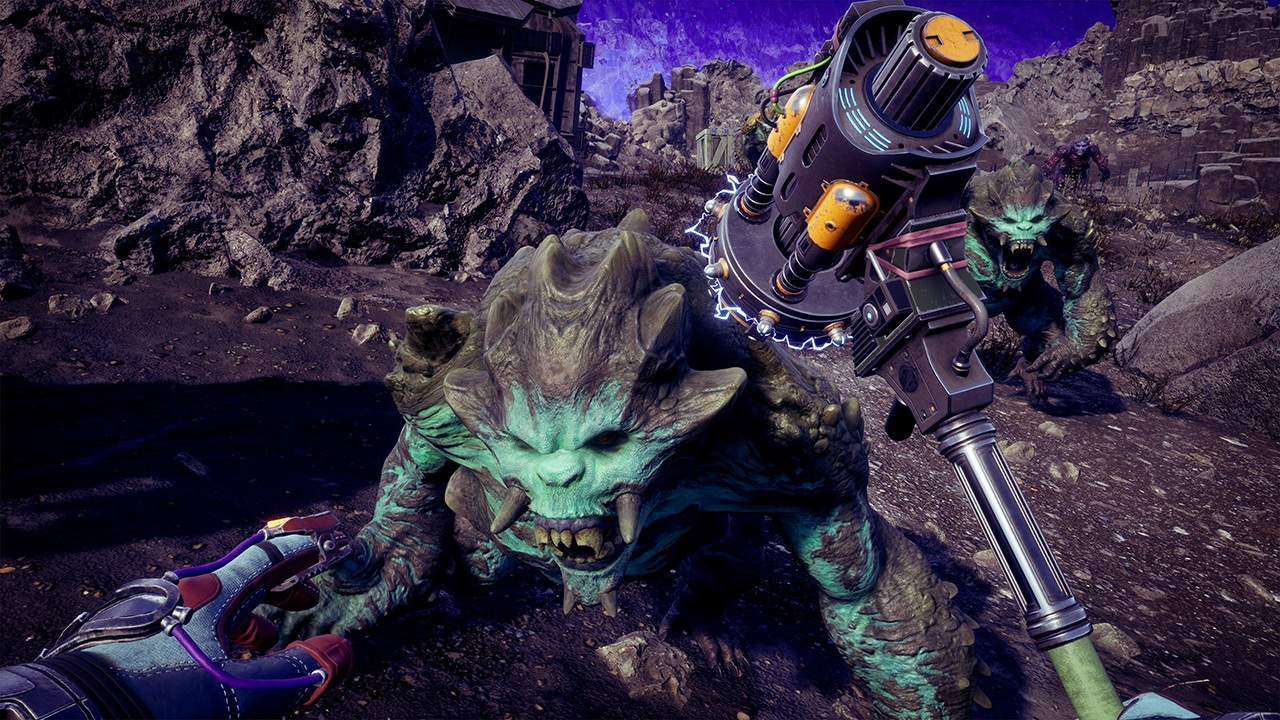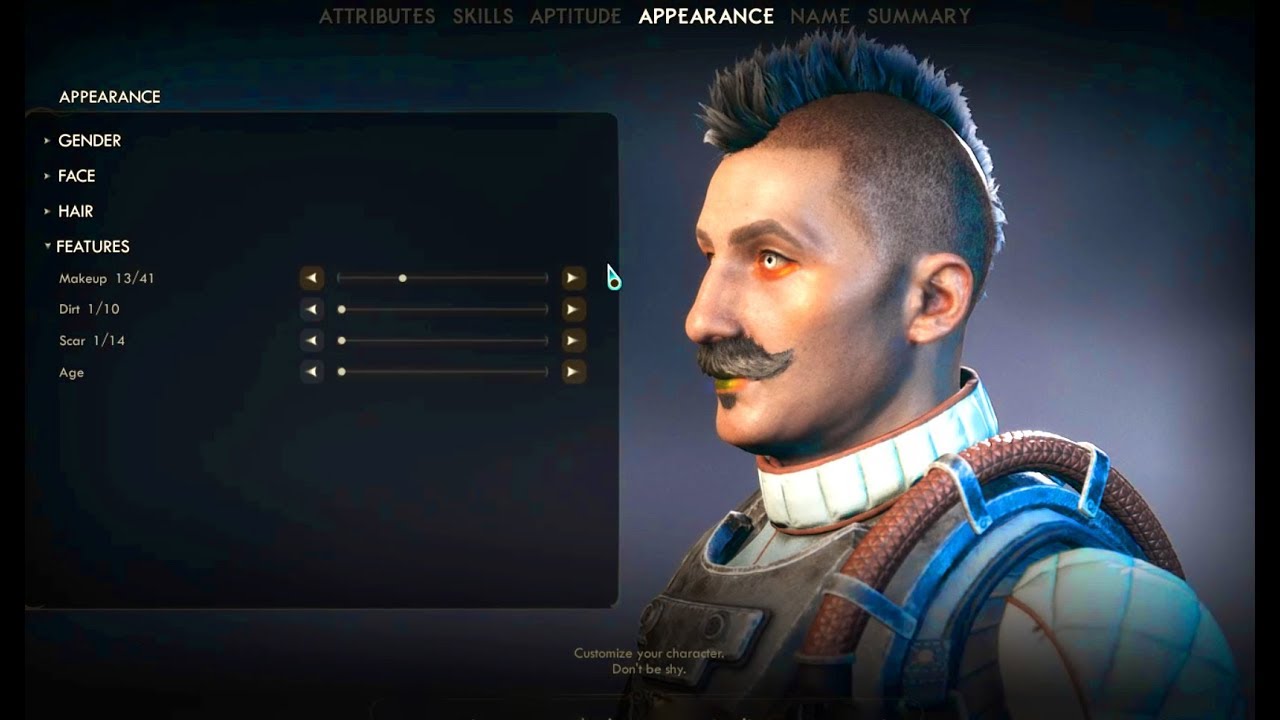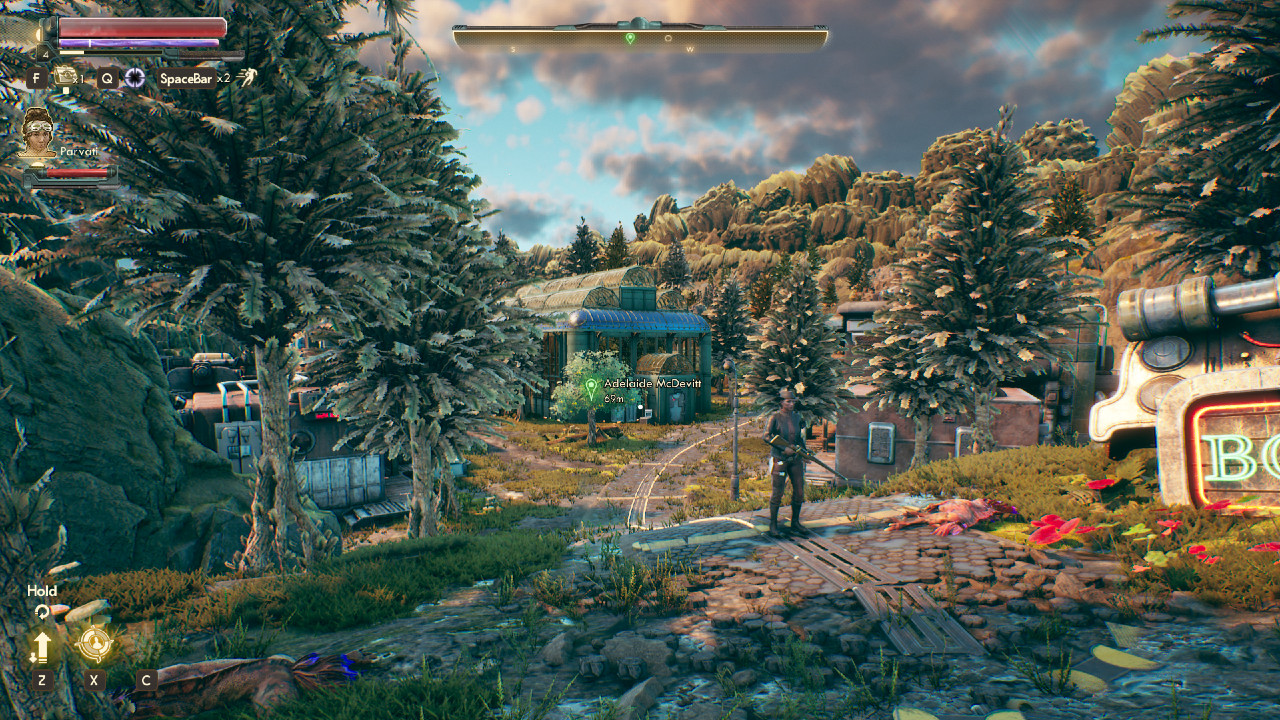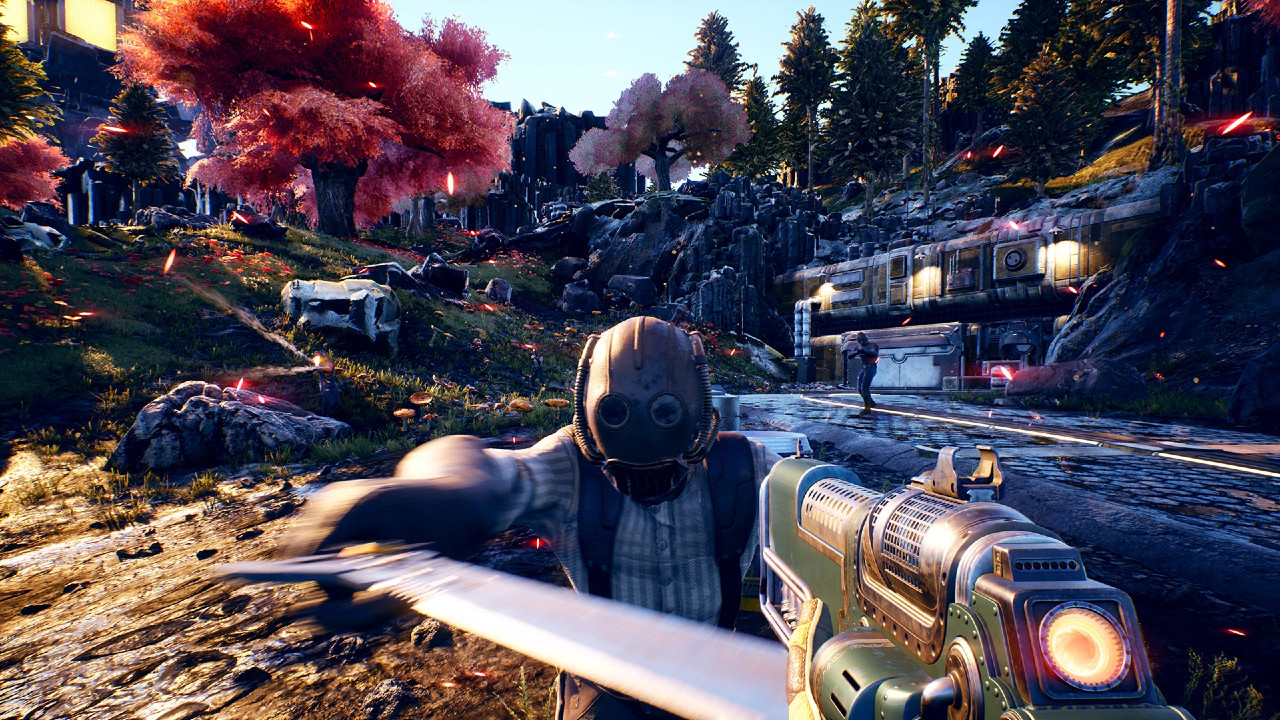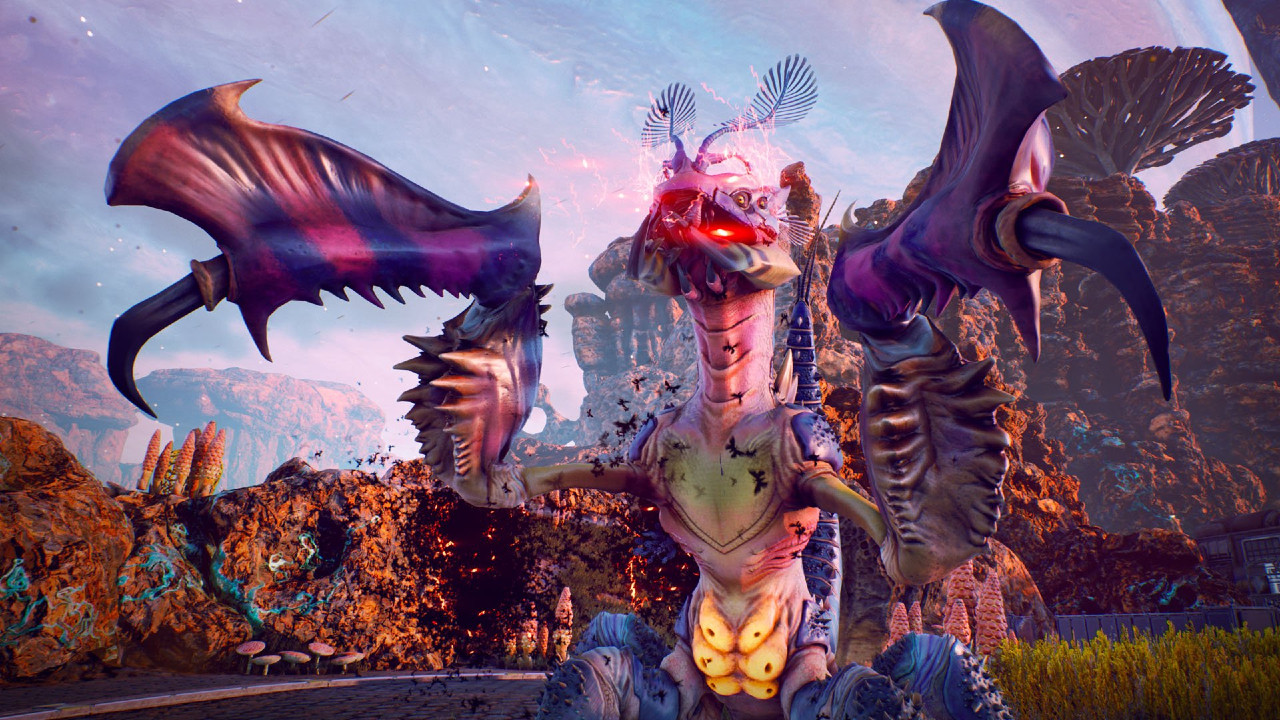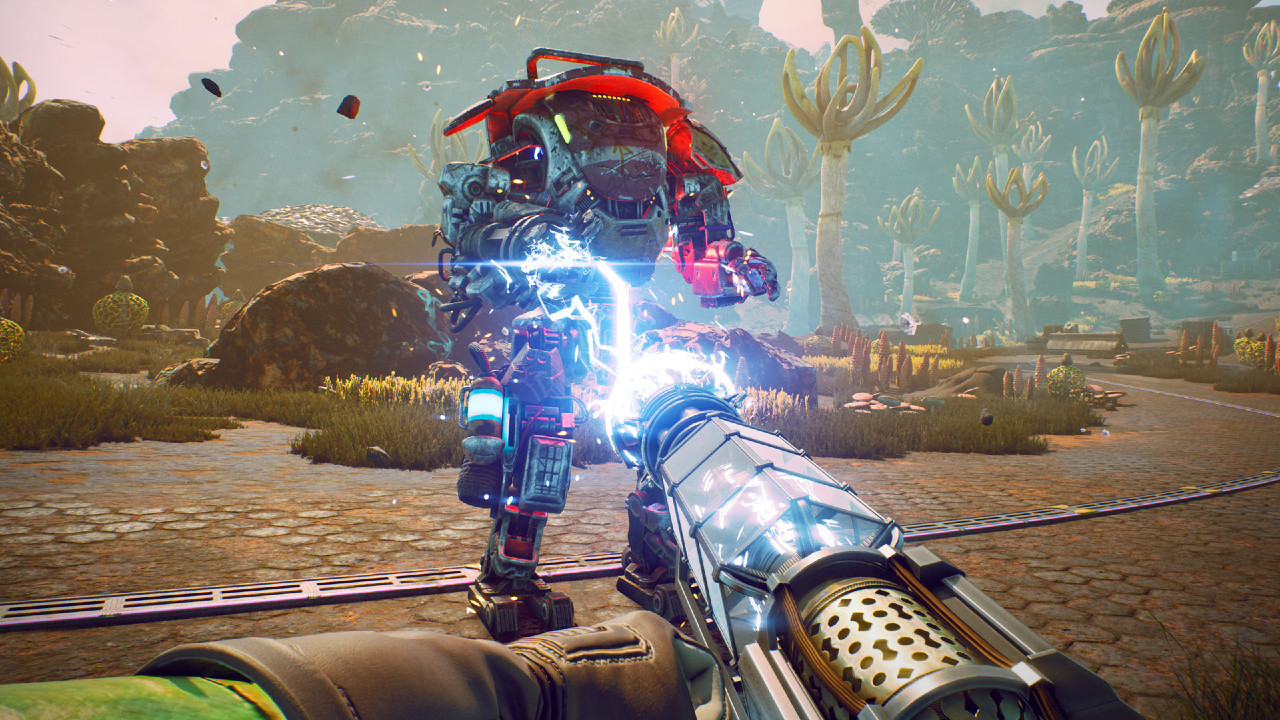Title – The Outer World
Platforms – PS4, Xbox One and PC (Nintendo Switch Later)
Release Date – October 4th, 2019
Developer – Obsidian Games
Publisher – Private Division
MSRP – $59.99
ESRB – M for Mature
Disclaimer – This product is being reviewed on the Xbox One X. A review copy was provided by the Private Division for the purpose of this review. This review may also contain spoilers for certain gameplay and story elements. Watch at your own risk, you have been warned. Gaming Instincts is an Amazon Affiliate and does gain financial benefits if you choose to purchase this product on this page.
The Outer Worlds is a brand new sci-fi single-player RPG created by Obsidian Entertainment, a well known entity in the RPG world of video games. One of their beloved projects was Fallout: New Vegas, released many years ago, during the PlayStation 3 and Xbox 360 era. They also created the first South Park RPG – South Park: The Stick of Truth, which was well received by fans and critics.
The closest thing fans have received to this type of game was Fallout 4 in 2015, and most recently, Fallout 76 in late 2018. Both titles were met with many complaints and criticisms that the games had changed too much, becoming something other than what people wanted and expected them to be. Fallout 4 failed to deliver RPG mechanics such as having players own meaningful choices that change the outcomes of their quests, while Fallout 76 turned out to be nothing but a Fallout MMO-lite type of game plagued with a ton of bugs, launch issues and greedy monetization.
So what does The Outer Worlds bring to the table in 2019, during an age in which single player RPGs are quite sparse and not what they used to be? Let’s find out.
Story
The game’s premise and plotline is simple. Players’ character (male or female) awakens from cryosleep, and then finds that the rest of the ship’s passengers are still in hibernation. Players land on an unknown planet. and must begin to discover what is happening there and on other worlds, as well as what the game’s mega-corporations are scheming.
One’s entire mission is to disrupt these mega-corporations while discovering factions and meeting people, helping set them free from the mega-corporations—or not if players desire—as the choices are completely up to gamers. This is where the game starts to shine with its story telling and mechanics—being able to control the narrative, save, backstab, or kill whoever players want, and see how far they can get with their choices in the world and the main storyline. That being said, let’s jump into the core mechanics of the game and how it all works, and of course—whether it’s fun or not.
Gameplay, Mechanics and RPG Elements
At its core, The Outer Worlds is a classic role-playing game, with many elements that players know and love from old-school RPGs such as the original Fallout games. Just like most RPGs, at the beginning of the game players choose their character and gender, then are taken to a character creation screen where they can modify their avatar’s appearance. Gamers may change skin tone, hair and facial hair, eye color, facial shapes, and so forth. For the most part, the character creator is nothing to brag about. It does all the things fans expect it to do. Users can change nose size and length, cheeks, and pretty much everything else they can imagine. It can lead to some hilarious looking faces, and atrocious ones as well. So, if gamers are looking to make a hideous character, then that won’t be an issue.
Both the female and male models look bad, and sometimes almost the same, which makes little sense. Thankfully, players don’t get to see the face of their character, as there is no third-person view whatsoever. At the end of the day, it doesn’t really matter what they look like, but it would be nice if the character models were good-looking to begin with. Many of the characters in the game world appear similar to each other, which breaks immersion and makes for a boring experience, as players see the same faces all the time.
After fans are done with the character creator, players will be dropped on their first planet, which acts like a training area where they start learning the game’s mechanics, dialogue systems, quests, combat, and all other basic things, such as sprinting, jumping and crouching. Right from the get go, players meet their first NPC and are introduced to the overall structure of Outer Worlds‘s questing and dialogue systems.
Depending on how players created their character, they will have different base stats. There are many different skills, such as Hacking, Intimidation, Science, Persuade, Lie, Tinker, and more. As players can imagine, each of these skills can benefit them in different ways when it comes to dialogue, or the use of computer terminals. Players can create a character that is absolutely amazing at lying, persuasion, or intimidation to aid in getting out of sticky situations or convince NPCs to do certain things, bypassing certain quest steps and getting ahead of the game; or, they can go toward a more intelligent approach, with high skills in science and hacking, allowing one to hack enemy bots and force them to fight each other. Or better yet, players can hack terminals to get the necessary questing information required. If players enjoy these types of things in RPGs, then they will love this part of the gameplay.
The Outer Worlds is full of many side-quests where players can choose how they approach every NPC and situation. This is what makes the game fun and unique, and lets players live the fantasy they always wanted. If neither talking nor hacking is one’s cup of tea, then they can also just go all-in with guns blazing, acting like a crazy murderer while killing every single civilian, guard, and side quest giver, taking everything.
However, that might be not the brightest thing to do, because the game does have a faction reputation system. Players can become super friendly with and gain certain perks from a faction, or end up hated and shot on sight. Players could also miss out on a lot of stuff, and get the quests completely botched, making them impossible to complete. These choices are completely up to players. The game also has four different difficulty options: easy, normal, hard, and supernova. Supernova is the hardest difficulty, so it would be inadvisable to go in with guns blazing in this mode, as everything is deadly. However, choosing a more stealthy, charismatic route will probably get players much further in this sort of difficulty setting.
The Outer Worlds has an interesting leveling system that at first may seem to be a bit overwhelming. However, as players level up further and further, the system beings to make more sense, and is easy to learn. When players create their character, they are allowed to choose what they want to put points into early. There are many different stats, and each stat is well explained at what it does and its uses. Players can do a combination/hybrid or they may tailor to a more specialized build if desired.
While leveling, players are also able to choose perks. There are three different tiers of perks, but to get tier two and three players first need to unlock a specific number of perks in tier one. Perks are basically passive bonuses that help players on their journey and complement their builds all throughout.
The player may also install many different mods on their armor pieces and weapons. If players are into min/maxing, then they will most likely spend a good amount of time figuring out what would be best for them, tinkering around until players are 100% satisfied. This is always a positive thing for an RPG. Overall, The Outer Worlds provides a compelling leveling experience that feels significant enough that players can feel their character growing stronger and more effective in certain tasks.
Combat
Combat in The Outer Worlds is what one would expect from a single player sci-fi/steampunk RPG. Different types of guns are available, some of which include: shotguns, automatic weapons, miniguns, plasma, as well as melee weapons wielded with one hand or two. Weapons can also have certain elements such as shock, which can knock enemies down and stun them. There are also weapons which cause bleed damage over time. Weapons may also have different statistics, and players can add mods to them, giving additional benefits to complement their build.
The same goes for the armor pieces. Armor mods exist as well as weapon mods, and may be equipped however players see fit. The gunplay is nothing groundbreaking, but gets the job done and feels good for what it is. The variety of weapons that The Outer Worlds offers is impressive. There are a ton of different looking melee weapons and range weapons as well, each of them with a unique look and feel, and that is always a good thing.
The Outer Worlds also has a system called TTD—Tactical Time Dilation. As the name implies, players press a button and go into bullet-time, letting them take easier shots, landing headshots or attacks to other enemy weak spots. TTD has its own gauge in the HUD that lets players know how much time they have left before it runs out. Players can also make the TTD gauge last longer if they wish, by building the character appropriately, gaining combat advantage throughout the game. However this is not necessary, as there are many others way to have such an advantage. Still, it’s always nice to have options.
Overall, The Outer Worlds gives players plenty of choices for how they want to tackle every combat scenario. The enemy AI is also not very bright, so it’s easy to glitch the mobs out, or have them run in circles until shot dead. To some that may be undesirable, while others might find it makes their Supernova run through a lot easier. In games like this, there is really no point in expecting outstanding AI, as they rely more on core RPG elements and other systems to make the game fun.
Visuals
The Outer Worlds utilizes the power and tools of Unreal Engine 4. Visually, the game looks appealing, with a colorful art-style that gives its universe its own personality and feel. If players are afraid of seeing another gray, underwhelming post-apocalypse FPS RPG, then there’s good news—that is not the case here. While character facial models are uninspiring and somewhat immersion-breaking, the guns, melee weapons, creatures, and armor all look unique and interesting in their own way, so it’s always exciting to find new gear.
Audio
As far as the audio goes, the game may not have a stellar or memorable soundtrack, but it works. The voice acting, however, is absolutely fantastic—a joy to listen to, considering that the majority of players time they be speaking to NPCs and questing. The weapons and combat audio sounds good for the most part, but again is nothing crazy good or bad. Plasma weapons sound like plasma, shotgun shots sound like a shotgun, as expected.
Overall, there weren’t any weird visual or audio bugs or issues during playtime. In an open world game like this, that is stellar. This is a much cleaner game, less bug-ridden than something like Fallout 4 or Fallout 76 from Bethesda. However, while everything may seem fine and dandy, Xbox One X version of the game is disappointing due to its prioritization of resolution and image quality over framerate. There is no option to play the game at 60 FPS, which is a shame and missed opportunity, considering that this is featured as a Game Pass title on day one.
Final Verdict
If one has been craving a true single-player RPG with a good leveling system, fantastic voice acting, good storytelling, and excellent pacing, then The Outer Worlds is a game that gamers must play. The game lasts around 30 hours, and that’s including completing both the main storyline and majority of side quests. Thankfully, with how many choices players have in this game, the replay value is high. It’s always fun to see the other outcomes in one’s next playthrough—or tenth.
The Outer Worlds is not a perfect game. It does not perform as well as it should have when played on the Xbox One X. With no option to play at 60 FPS or go to a higher than 1080p resolution, an opportunity has been missed. The hardware is more than capable of that kind of performance, so it’s very confusing that the game doesn’t take advantage of that. Also, 30+ hours is a tad too low for gameplay length for this kind of a title. 50 or more hours in a world like this should be the standard. At the end of the day, The Outer Worlds is a game that deserves players attention, whether a fan of earlier Fallout titles such as Fallout 3 and New Vegas, or if one is on the lookout for a new single player RPG, period.
The Outer Worlds is available on Game Pass, so if players are an owner of Game Pass then we’d highly recommend they give it a shot. However, if one is 100% positive they want the game then they may purchase it right here. Stay tuned at Gaming Instincts via Twitter, YouTube, Instagram, and Facebook for more gaming news.



